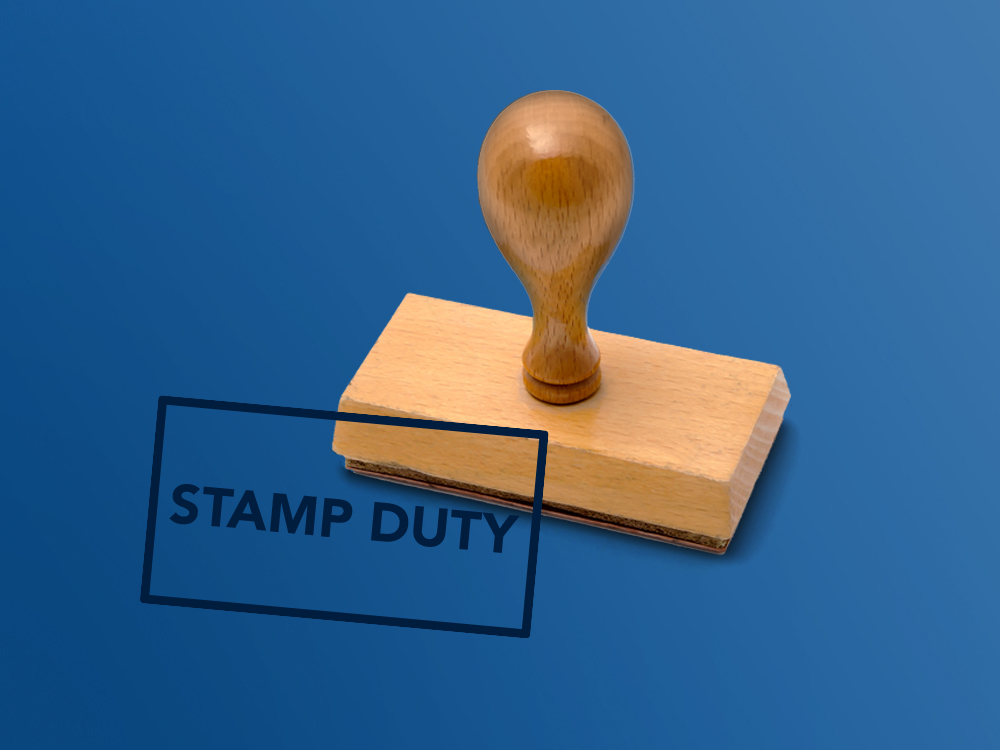Guide to Stamp Duty Land Tax
If you buy a property in England or Northern Ireland, you’ll probably have to pay Stamp Duty Land Tax (SDLT) on it.
We say ‘probably’, because there are various exemptions. And if you’re in Scotland, the Land and Buildings Transactions Tax will apply; in Wales it’s the Land Transaction Tax.

Introduction to SDLT
SDLT turned 20 years old in 2023, after its birth in 2003 in the Finance Act, replacing Stamp Duty – so called because an actual stamp used to be stuck onto property title documents, to show that duty had been paid.
Today, there are no stamps, and the tax itself has morphed into a far more complex and changeable beast. Successive government have raised and lowered its thresholds, introduced new exemptions and liabilities, opening and shutting windows like an accountant’s Advent Calendar.
So here’s a warning: be sure to check the exact terms of SDLT as they apply at the time you’re making a transaction, and how they may change in the months and years ahead. Governments are prone to make changes in their annual budgets, to take effect in Finance Acts, so look out for the latest news.
As of spring 2023, here is the current situation.
Basic rates
For properties sold for up to £250,000 no SDLT applies for most buyers.
For properties sold for between £250,000 and £950,000 SDLT of 5 per cent applies to that slice.
For properties sold for between £950,000 and £1.5 million SDLT of 10 per cent applies to that slice.
For properties sold for more than £1.5 million, SDLT of 12 per cent applies to any amount above that level.
SDLT applies to both freehold and leasehold properties, whether you’re buying outright or with a mortgage.
Second home rates
To discourage buy-to-let investors and free up property for first-time buyers, the government has introduced an additional SDLT rate for anyone buying a second home. This is 3 per cent above the basic rate, including any amount up to £250,000. So if the second home you buy costs £500,000, you will pay SDLT of 3 per cent on the first £250,000 and 8 per cent (5 per cent plus an extra 3 per cent) on the second £250,000. Then 13 per cent on any amount between £950,000 and £1.5 million, and 15 per cent above £1.5 million.
One thing to watch out for: if you’re buying a residential property and – at the same time – selling your existing property, you may end up owning both properties at the same time. This makes you liable to pay the second home rate of SDLT, even if you only have them both for a short time. You can apply for a refund of the extra tax, but you have to sell the first property within three years of buying the second one – and apply for the refund within 12 months of that sale.
Relief for first-time buyers
In England and Northern Ireland, there’s no SDLT to pay for first-time buyers on properties costing up to £425,000. Beneath £650,000, they pay nothing on the first £450,000, then 5 per cent on any amount between £450,000 and £650,000. If the property costs more than £650,000, there’s no first-time buyer relief.
(We warned you it was complicated!)
Non-resident buyers
If you’re a non-UK resident buying residential property in England or Northern Ireland, you’re liable to pay an additional 2 per cent SDLT above the standard rate for any property costing more than £40,000.
Other exemptions
If you’ve been left property in a will, or someone has given it to you, SDLT doesn’t apply so long as there’s no outstanding mortgage on it. If there is, then SDLT is levied on the value of the mortgage, above whatever threshold limit applies. The transfer of a property following a divorce, separation or at the end of a civil partnership is also exempt from SDLT.
If you buy six or more residential properties at the same time, you could benefit from Multiple Dwellings Relief, where SDLT is calculated on the average purchase price from all the properties in the transaction, rather than from each one individually. This can work out to the buyer’s advantage in many cases.
How and when to pay SDLT
SDLT has to be paid within 14 days of the property transaction completing – effectively, from when you take possession. Typically, your solicitor will pay SDLT on your behalf, although it’s possible to do it yourself. If you’re not a solicitor or conveyancer, get an SDLT1 form from HMRC, include a valid local authority code, sign it and return it to HMRC.
When paying the tax, be sure to use the correct 11-digit ‘unique transaction reference number’ (UTRN) and the right HMRC bank account, which will mean that HMRC can link the payment to the SDLT return.
If you make a late SDLT return, you’ll be liable for a £100 penalty, rising to £200 if it’s more than three months late. After 12 months, this becomes a tax-based penalty, with interest charged on the amount owing.
Mixed use properties
This is a further area of SDLT law with complex terms, so it’s worth discussing the situation with a good solicitor who understands the details.
If you buy a building with an apartment above a shop, then this counts as mixed-use. SDLT is then charged at commercial rates, which are zero up to £150,000, then 2 per cent between £150,000 and £250,000 and 5 per cent above £250,000.
Other examples of mixed use include large country estates, where some of the land is used for farming. As with other areas of SDLT, the rules are liable to change and there are debates between HMRC and legal advisers over what constitutes mixed use. So get good advice.
Final thoughts
Because SDLT can be a major burden on buyers, sellers like to price their properties just below SDLT thresholds. They know that a £949,000 property (5 per cent SDLT above £250,000) is more attractive than a £980,000 property (10 per cent SDLT on the final £30,000). Use this knowledge to your advantage.
Read next: The guide to property financing options
Read the full guide: The guide to property investment
Mini Bridging Loan
Up to £750k available in 3 to 7 days! Our lenders keep fees & fuss to a min using in-house valuations & dual rep solicitors. Suitable for individuals & businesses.
Discover More





